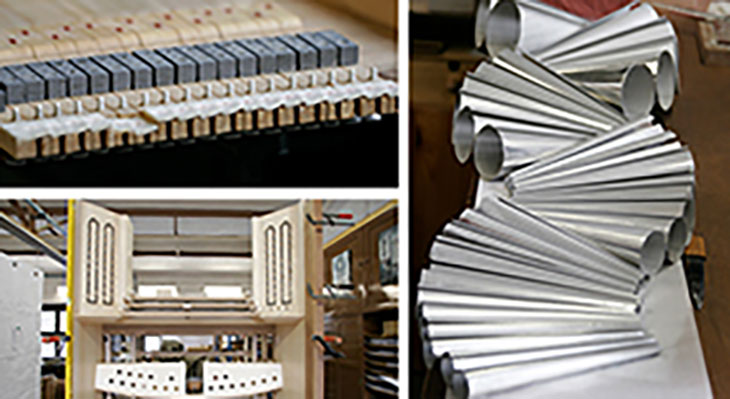Making sound art with stops and pipes
New training regulations for organ makers
09/2019 | Bonn, 06.03.2019

Organs contain pipes which range in size from tiny to enormous, and the impressive music which emerges from them is something truly special. The building of organs is a craft with a long tradition. Each organ is an individual piece, constructed to fit the architectural space in which it will ring out, and designed to last for centuries. Working on behalf of the Federal Government and acting in conjunction with the federal ministries responsible, the social partners and experts from the field of company practice, the Federal Institute for Vocational Education and Training (BIBB) has updated the existing training in the occupation of organ maker. The new training regulations enter into force on 1 August 2019.
Organ making has held intangible cultural heritage status since 2017. An organ is more than just an instrument. It is an art object in its own right, consisting of thousands of parts which are unique in terms of their shape, sound and volume. Organ makers are involved with the design, construction, manufacture and sound composition of organs. Further main task areas include maintenance, tuning and voicing. They also repair, restore and reconstruct existing organs.
The revision of the training occupation, which is of a duration of three and a half years, addresses technical, economic and organisational changes and developments that have taken place in the field of organ building. The new training regulations take account of altered and updated standards in the area of electrically and electronically operated organ systems as well as according due consideration to the introduction of CNC-controlled machines in some parts of the manufacturing process. There are also new contents relating to quality assurance and customer orientation. The previous occupational title of organ and harmonium maker has been changed to reflect the fact that new harmoniums are no longer produced. Nevertheless, the repair of harmoniums still forms part of the training.
The new training regulations continue to differentiate between two specialisms. These are organ building and pipe making. The specialism of organ building places the main emphasis on the construction of housing parts and consoles, on the production of parts for the action, i.e. the transmission system for producing a sound from the keyboard and engaging the stops, and on the installation of organs at their intended venue. The specialism of pipe making includes aspects such as the production of metal plates for pipes. Manufacture and repair of the various kinds of organ pipe are also covered
Trainees do not have to be able to play the instrument themselves in order to become an organ maker, but a good musical ear and manual dexterity are certainly an advantage alongside a genuine love of the occupation. However, those who later wish to specialise as a voicer should be able to operate an organ.
In 2018, 48 young people concluded a training contract in the occupation of organ and harmonium maker. The prospects of obtaining permanent employment on completion of training are good. A further qualification as master organ and harmonium maker can be pursued following the completion of training.
The updated training regulations and the aligned skeleton curriculum, which has been developed by the Standing Conference of the Ministers of Education and Cultural Affairs for the school-based part of the dual vocational education and training, replaces the existing regulations from 1984 as of 1 August 2019.
Image material is available at www.bibb.de/pressefotos.
Point of contact: Dr. Inga Schad-Dankwart; email: schad-dankwart@bibb.de
Specimen copy requested if printed.